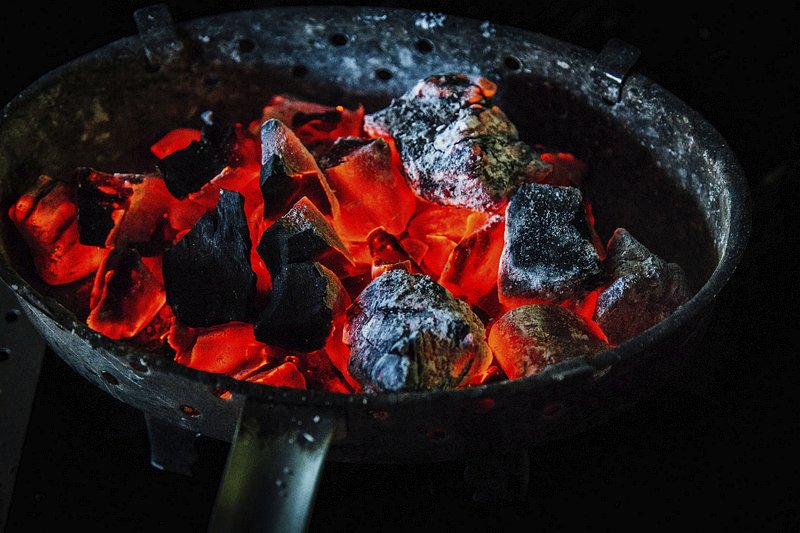For many outdoor cooking enthusiasts, the choice of charcoal plays a pivotal role in achieving that perfect flavor and cooking experience. Traditional charcoal has been a long-standing choice, but in recent years, coconut charcoal briquettes have gained recognition and popularity for their unique properties. In this comprehensive guide, we will explore everything you need to know about coconut charcoal briquettes, from their origins to their benefits and how to use them for your grilling and barbecuing needs.
The Origin of Coconut Charcoal Briquettes
Coconut charcoal briquettes are a product of repurposed coconut shells. The coconut industry generates a significant quantity of waste in the form of discarded coconut shells, which were typically considered agricultural waste Aracoco Indonesia. However, a sustainable and environmentally responsible approach emerged, resulting in the use of these discarded shells to create high-quality briquettes.
The production process typically involves collecting, cleaning, and carbonizing the coconut shells. After the shells are thoroughly cleaned to remove any residual coconut flesh, they are heated in a controlled environment to carbonize the shells and convert them into charcoal. The resulting charcoal is then crushed and bound into briquette shapes using natural binders, making them suitable for use as a cooking fuel.
The Benefits of Coconut Charcoal Briquettes
- Environmental Sustainability: Coconut charcoal briquettes are hailed for their environmental friendliness. By repurposing coconut shells that would otherwise be discarded as waste, this charcoal promotes sustainable and eco-conscious practices, reducing waste from the coconut industry and supporting responsible sourcing.
- Clean and Efficient Burning: Coconut charcoal briquettes produce minimal ash and smoke, ensuring a clean and efficient cooking experience. They are known for their ability to reach and maintain high temperatures, making them versatile for various cooking techniques.
- Natural Flavor Enhancement: When ignited, coconut charcoal briquettes release a mild, sweet, and smoky flavor that enhances the taste of grilled food. Unlike traditional charcoal products, coconut charcoal is typically free from additives, chemicals, or fillers, ensuring that the flavor is natural and unadulterated.
- High Heat Output: Coconut charcoal briquettes are renowned for their high heat output, making them suitable for searing, quick grilling, or slow smoking. They provide a consistent temperature, allowing you to achieve perfect cooking results.
- Consistency: These briquettes are known for their uniformity and consistent quality. This ensures that your grilling and barbecuing experiences are predictable, reducing the chances of fluctuations in heat and cooking times.
- Long Burn Time: Coconut charcoal briquettes have a longer burn time than many traditional charcoal options. This feature allows for extended cooking sessions without the need to replenish the fuel frequently.
- Quick Ignition: Coconut charcoal briquettes are known for quick ignition, saving you time and effort when starting your grill or barbecue. This ensures that you can begin cooking sooner, reducing the waiting time.
- Odorless Burning: These briquettes burn nearly odorless, meaning your food won’t absorb unwanted odors or flavors during the cooking process. This feature allows you to focus on the natural flavors of your ingredients.
How to Use Coconut Charcoal Briquettes
Using coconut charcoal briquettes for your outdoor cooking is straightforward, but following the right steps ensures the best results:
- Lighting: Start your charcoal with a chimney starter or an electric charcoal starter for efficient and reliable ignition. Avoid using lighter fluid or chemical-based fire starters, as they can introduce unwanted flavors to your food.
- Burn Time: Keep in mind that coconut charcoal briquettes burn longer than traditional briquettes. Plan your grilling or barbecuing session accordingly, and you may not need to add more briquettes as frequently.
- Ventilation: Ensure proper ventilation on your grill or barbecue to control the heat. Coconut charcoal briquettes can get extremely hot, so it’s crucial to manage the airflow to maintain the desired cooking temperature.
- Food Placement: Wait until the briquettes are covered with a layer of white ash before placing your food on the grill. This ensures your dishes won’t pick up any unwanted odors or tastes.
- Flavor Enhancement: Experiment with different ingredients and cooking techniques to embrace the mild and sweet smoky flavor provided by the briquettes. Tailor your recipes to make the most of this unique feature.
Where to Find Coconut Charcoal Briquettes
Coconut charcoal briquettes are readily available and can be found in many specialty stores, online retailers, and well-stocked supermarkets. When purchasing, look for products that specify they are made from 100% coconut shells and do not contain any fillers or additives. Buying in bulk can also be a cost-effective option for regular grillers and barbecuers.
Conclusion
Coconut charcoal briquettes have become a favorite choice for outdoor cooking enthusiasts who value sustainability, clean and efficient burning, natural flavor enhancement, high heat output, consistency, and long burn time. When using these briquettes, you can enjoy a delightful and environmentally friendly grilling or barbecuing experience. The mild smoky flavor they impart to your dishes is a unique and appealing characteristic that sets them apart from traditional charcoal products.
Incorporating coconut charcoal briquettes into your outdoor cooking routine allows you to savor the natural flavors of your ingredients while supporting responsible environmental practices.
